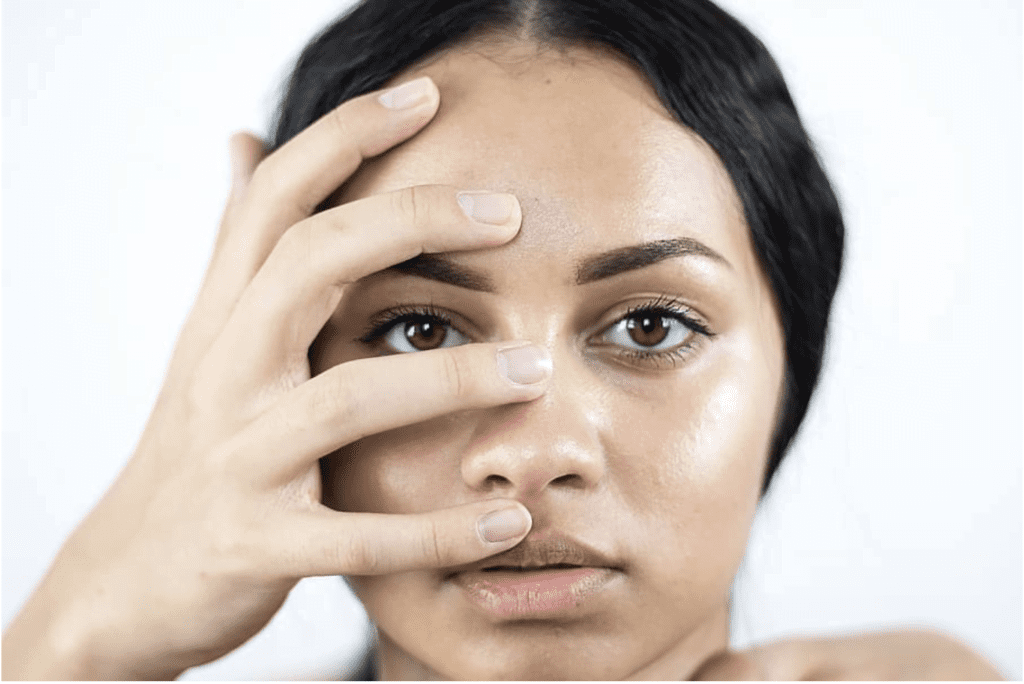Introduction
Skin type is essential for developing an effective skincare routine and selecting the right products. our skin is a complex organ that requires specific care based on its unique characteristics. In this article, we will explore the classification system for different skin types, highlighting their distinct characteristics and discussing the appropriate skincare practices and products for each type.
I. Importance of Understanding Skin Types
A. Impact on Skincare Routine and Product Selection
- Different skin types require specific care to maintain optimal health.
- Understanding your skin type helps you choose products that address your skin’s unique needs.
B. Overview of the Classification System
- Skin types are differentiated based on their specific characteristics and requirements.
- Identifying your skin type allows you to tailor your skincare routine accordingly.
II. Normal Skin (pH 5.5 to 5.6)


A. Description and Characteristics of Normal Skin
- Normal skin has well-balanced sebum production.
- It exhibits an even texture and tone.
B. Maintenance and Care for Normal Skin
- Gentle cleansing and moisturising are essential for maintaining normal skin.
- Sun protection and regular exfoliation help prevent potential skin issues.
C. Effects of Neglect on Normal Skin
- Neglecting proper care can lead to the development of various skin concerns.
III. Dry Skin


A. Description and Characteristics of Dry Skin
- Dry skin lacks sufficient sebum production.
- It may appear rough, flaky, or tight.
B. Common Issues Faced by Individuals with Dry Skin
- Dry skin is often prone to itchiness, redness, and sensitivity.
- It has an increased risk of premature ageing.
C. Strategies for Moisturising and Treating Dry Skin
- Hydrating cleansers and rich moisturisers are beneficial for dry skin.
- Incorporating nourishing ingredients like hyaluronic acid and ceramides helps restore moisture.
IV. Sensitive and Allergic Skin


A. Description and Characteristics of Sensitive and Allergic Skin
- Sensitive skin reacts to certain ingredients or environmental factors.
- It is prone to redness, inflammation, and irritation.
B. Factors Contributing to Sensitivity and Allergic Reactions
- Genetic predisposition and environmental triggers play a role.
- Allergens, fragrances, and harsh chemicals can provoke reactions.
C. Tips for Managing and Protecting Sensitive Skin
- Patch testing new products before use is crucial.
- Using gentle, fragrance-free formulations with soothing ingredients helps reduce sensitivity.
V. Mature Skin


A. Description and Characteristics of Mature Skin
- Mature skin experiences reduced collagen and elastin production.
- It exhibits fine lines, wrinkles, and a loss of elasticity.
B. Effects of Ageing on the Skin
- Ageing can result in dullness, uneven skin tone, and age spots.
- Addressing specific ageing concerns becomes essential.
C. Skincare Practices and Dietary Considerations for Mature Skin
- Anti-ageing ingredients like retinol and antioxidants are beneficial.
- Adequate hydration, a balanced diet, and lifestyle factors contribute to skin health.
VI. Oily Skin


A. Description and Characteristics of Oily Skin
- Oily skin is caused by overactive sebaceous glands.
- It often appears shiny, greasy, with enlarged pores.
B. Common Concerns Associated with Oily Skin
- Oily skin is prone to acne breakouts and congestion.
- Makeup may have difficulty staying in place on oily skin.
C. Strategies for Managing and Balancing Oil Production
- Gentle cleansing, oil-free products, and non-comedogenic ingredients are recommended.
- Regular exfoliation and sebum control techniques help manage oil production.
VII. Combination Skin


A. Description and Characteristics of Combination Skin
- Combination skin consists of both oily and dry/normal areas.
- Finding a balance between the different areas can be challenging.
B. Challenges in Treating Combination Skin
- Different areas of the face have varying needs.
- There is a potential for over treating or under treating certain areas.
C. Recommended Skincare Routines and Products for Combination Skin
- Tailoring products to specific areas of the face is crucial.
- Balancing hydration and oil control is key.
VIII. Conclusion
A. Importance of Identifying and Understanding Your Skin Type
- Understanding your skin type helps you make informed decisions about skincare.
- It allows for personalised and targeted care, resulting in improved skin appearance and confidence.
B. Emphasising the Significance of Proper Skincare for Overall Skin Health
- Proper skincare promotes the prevention and management of skin concerns and conditions.
- By addressing your skin’s specific needs, you can achieve healthier and more radiant skin.


Pingback: the pH Scale and Acid Mantle: Importance for Healthy Skin